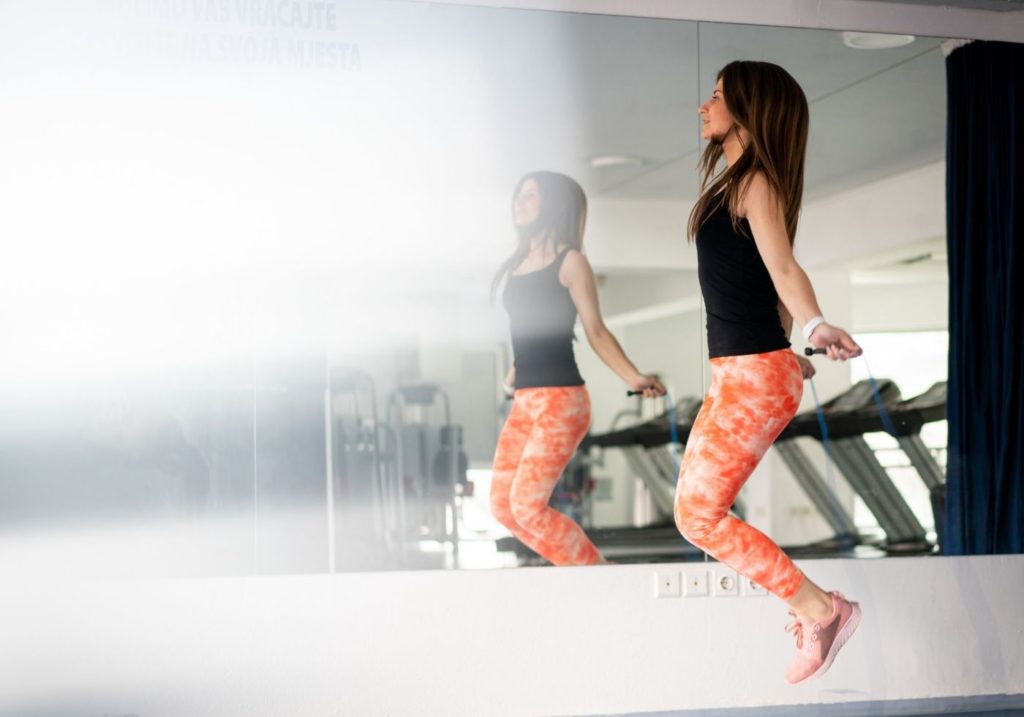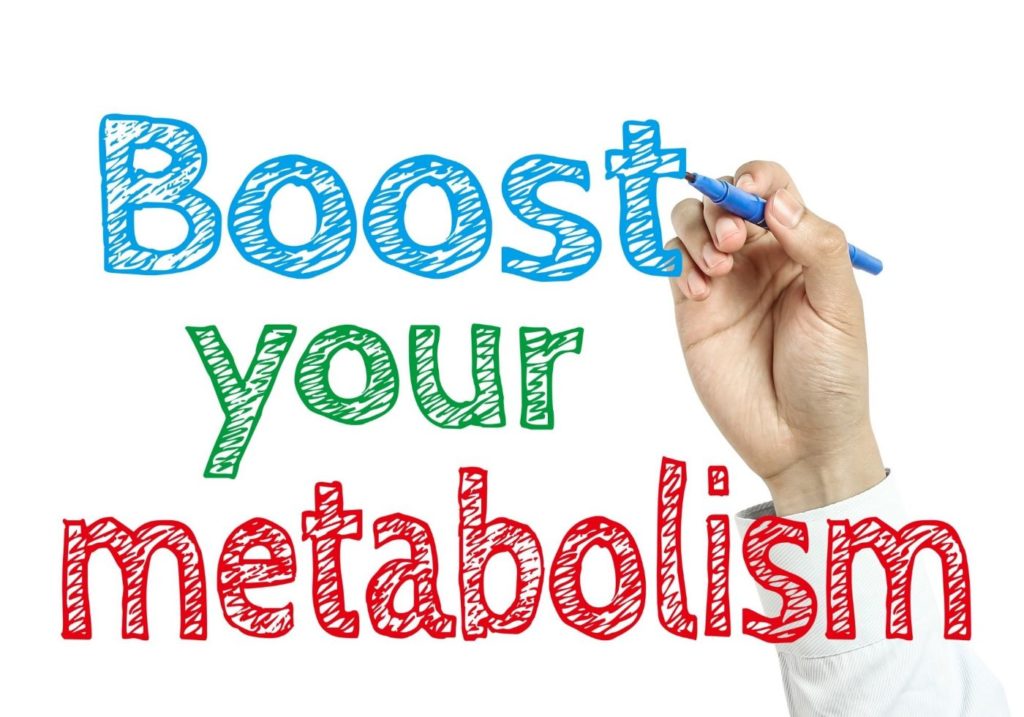High-Intensity Interval Training is finally gaining the attention it deserves as the gold standard of all fitness methods. But what are the real reasons to consider trying HIIT?
If you want to get the most out of your workout in the least amount of time, HIIT may be what you need. HIIT is one of the most effective ways to burn fat while building muscle strength and endurance. However, it can also be incredibly taxing on your body—especially if you’re new to this exercise. This post will cover everything you need to know about high-intensity interval training, including its benefits (and risks), and how much recovery time is required after each session.
Key Takeaways
- High Intensity Interval Training (HIIT) alternates between intense exercise and short recovery periods, saving time while maximizing results.
- HIIT improves cardiovascular health, boosts calorie burn, and enhances endurance.
- Start with lower intensity and gradually increase to avoid injury.
- Consult a healthcare professional before starting any new exercise program.
- HIIT is adaptable to all fitness levels and preferences.
- Vary exercises and intensities to keep workouts challenging and prevent plateauing.
- Listen to your body and prioritize rest days for proper recovery.
Why do HIIT?
HIIT burns a lot of calories in a short amount of time. This is because it increases the intensity of your workout, which means you’ll be working at your maximum heart rate and breathing rate. HIIT can burn as many calories as long-distance running–in only 20 minutes!
HIIT has been shown to help increase muscle mass and strength due to the high-intensity nature of the exercise (elevated heart rate). This means you will still build muscle through HIIT workouts, even without lifting weights or doing resistance training.
HIIT improves cardiovascular fitness by increasing VO2 max (the maximum capacity for oxygen consumption). This is an essential factor in determining how efficiently our bodies use energy during daily activities like walking up stairs or playing with kids outside in hot weather conditions. We might get tired quickly if we don’t have good cardiovascular fitness levels already established before starting these activities. It makes sense why so many people choose high-intensity interval training rather than just walking around all day without any breaks between sets!
What is HIIT?
HIIT is a type of training that alternates between short bursts of intense exercise and rest periods. It involves short bursts of intense exercise followed by periods of rest. This type of training is an effective way to burn calories, improve overall fitness levels, and reduce body fat.
HIIT can be done indoors or outdoors and requires little equipment. However, it’s important to note that not all HIIT workouts are created equal: some may be better suited for your goals than others, depending on the intensity level you’re looking for (or if you have any health issues).
What is the advantage to HIIT training?
HIIT combines short bursts of intense exercise with brief recovery periods, allowing you to burn calories, boost your metabolism, and improve cardiovascular health in less time than traditional workouts. With HIIT, you can achieve remarkable results while enjoying the convenience and efficiency of a time-saving exercise regimen. Say goodbye to long hours at the gym and hello to the benefits of HIIT training!
Benefits of HIIT

HIIT is a great way to burn calories, which can help with weight loss. HIIT can also improve cardiovascular fitness, insulin sensitivity, and aerobic capacity (the ability of your body to use oxygen).
Some studies have shown that high-intensity interval training could be as effective at reducing body fat as more extended periods of moderate-intensity exercise. One study found that people who did ten 60-second sprints three times per week lost more weight than those who did 40 minutes of moderate exercise five times weekly. Another study found that four weeks on an interval training program resulted in similar improvements in muscle strength compared with traditional resistance training over the same period.
More Calories in Less Time

For many of us, hitting the gym and doing our favorite workout is a great way to start the day. It gets those endorphins pumping; we sweat it out and feel great! We push ourselves and improve our fitness levels a little more every time. This can be especially true with High-Intensity Interval Training (HIIT), which has recently hopped on the fitness bandwagon because it’s so effective for working out quickly. HIIT workouts are known as some of the best in burning calories, and even though they are short, you can still blast fat quickly.
If you are new to exercise or you have an average metabolism, you might not be getting all of the calories out of your workouts that you think. After hitting the gym, many people see few results in weight loss or muscle gain. This is because they may not be doing enough high-intensity interval training (HIIT).
HIIT, short for high-intensity interval training, is a great way to get the most out of your workouts. Studies show it can be as effective for weight loss as longer cardio sessions but in much less time.
If you’re willing to put in the time, you can increase burn calories during a workout. This will help you get fit faster and make your activities more fun! I’m not just talking about burning fat; cardio is excellent for overall health. But if you’d like to pursue a muscle-building program, too, it’s important not to focus on sprints for the entire day. That kind of workout routine can weaken muscles instead of building them up.
HIIT boosts your metabolism
You probably know HIIT is a great way to get into shape, burn calories, and improve your health. But did you know it can also boost your metabolism for hours after your workout?
There’s no beating around the bush here – HIIT workouts are great for losing weight fast. You take your average fat loss plan and multiply it by 5… that’s how many times faster you’ll lose fat with a HIIT workout program. That’s because HIIT boosts your metabolism into overdrive.
Every central sports team globally uses this training technique to maximize their athleticism. It’s no wonder it’s been proven to be the best method for increasing your metabolism and burning fat.
So, what’s the scientific consensus on HIIT? A recent survey of research into HIIT found that it is better than steady-state cardio to lose fat and gain muscle. It also boosts your metabolism, which means your body burns more calories even when you’re not working out. If you want to lose belly fat quickly, then HIIT is the way to go.
HIIT is super efficient
High-intensity interval training has been the talk of the town for years now. It all started with a study proving this type of workout gives you more energy and is super-efficient. That’s how HIIT was born, and now everyone has jumped on the bandwagon and started including it in their workouts. It’s no longer liked or tweeted about; it has become hype. But why is that so? What does HIIT offer that hasn’t been offered before? Is it worth trying?
High-Intensity Interval Training, aka HIIT, is a super-efficient form of exercise that causes your body to burn calories during and for hours afterward.
If I had to choose one form of aerobic exercise, I’d say HIIT. I know it can be intimidating for beginners, but the name says it all: it’s hard, which I enjoy. Even better, the fact that there is no resting makes it super-efficient.
Undoubtedly, aerobic exercise is essential to incorporate into your daily routine. However, this doesn’t necessarily mean you have to spend hours upon hours at the gym. High-intensity interval training (HIIT) is one of the most efficient and effective forms of exercise, and it only takes around 12 minutes!
Super intense exercise

High-intensity interval training (HIIT) is a super intense exercise that alternates between fierce anaerobic workouts and short rest periods.
High-intensity interval training (HIIT) is popular because it “speeds up” your metabolism. This means that your body will continue calories at a greater rate for several hours after you finish combatant intensity exercise (i.e., steady-state cardio).
There are many ways to cut down your workout time. However, you may not have heard of High-Intensity Interval Training (HIIT). This proven method is a great way to sneak in an excellent and effective workout for those short on time!
It keeps burning cals, even after you stop working out

High-Intensity Interval Training (HIIT) keeps burning calories, even after you have finished working out. This makes HIIT ideal for helping you lose fat faster and get better results from less training time.
We’ve all read that our bodies continue to burn calories after exercise. Known as the “afterburn effect,” HIIT clearly explains why this is so. Your body burns calories long after an intense cardio workout. But, as you may suspect, no old exercise will do. A new study has found that high-intensity interval training (HIIT) produces just as many – if not more – benefits after the workout than the more prolonged and less strenuous exercise of moderate intensity.
One of the most significant advantages of high-intensity interval training is that your body burns calories long after you’ve stopped exercising. This is called EPOC, or excess post-exercise oxygen consumption, and while not all HIIT workouts elevate your heart rate to the same degree, any high-intensity training will help you burn more fat while at rest. It’s a pretty cool phenomenon, and once you understand how it works, you can use it to your advantage in pushing past plateaus or reaching new fitness goals.
Since you’re an avid blog reader, you’ll remember that I already discussed HIIT in another post. The methods used in HIIT allow you to burn more calories for longer than a regular workout. This is because fast-paced cardio allows your body to continue burning calories long after you finish your training. You see, your body will burn more calories longer to compensate for what it didn’t have time to burn. Of course, the long-term maximum amount of weight you can lose is always determined by basic math: calories in vs. calories out.
The Afterburn Effect
Just because you stop exercising doesn’t mean your body stops burning calories. Recent research suggests that high-intensity interval training (HIIT) can increase metabolism even after the exercise. HIIT refers to short bursts of high-intensity activity followed by brief rest periods. The study found that people who did just four minutes of sprints three times a week for 12 weeks increased their resting metabolic rate by 15% and moderately increased skeletal muscle mass and size.
Burning fat and getting ripped is tricky! While exercise is the most critical factor in burning fat, nutrition also plays an essential role in achieving your body’s goals. It’s tough to burn fat while eating pizza and ice cream. To work out effectively, you need to exercise efficiently. High-intensity interval training (HIIT), a short burst of high-intensity exercises followed by low-intensity activities, is a more effective way to work out. It is because of the “afterburn effect” of HIIT that burns calories even after your training is over.
You are probably familiar with the term “afterburn effect.” This phenomenon occurs when our bodies keep burning calories after we have finished exercising. We metabolize, break down and digest food while exercising, increasing the body’s metabolism. After this process, the afterburn effect kicks in and lasts up to 48 hours after a HIIT session. Exercise intensity, duration, frequency, and body type affect the number of calories your body burns, even if you’re sitting still.
HIIT strengthens your heart

HIIT, besides being an excellent workout for your core and building strength, can also help strengthen your heart. This training helps strengthen the heart by increasing endurance, reducing the risk of heart failure, and improving circulation. Unfortunately, we all know how the news sensationalizes just about anything, so there’s no doubt you’ve heard some pretty negative things about HIIT lately.
Increased heart strength will be a top priority if you’re a fitness enthusiast. Increasing your cardiorespiratory endurance will give you the body you want and the health to match. With HIIT training, the intensity is as high as the results.
Cardio exercise is the best way to get a total body workout, but not everyone has time to do it regularly. You can get many health benefits from cardio with High-Intensity Interval Training (HIIT). Not only does HIIT give you a great workout, but it can also improve your overall cardiovascular fitness and ward off heart disease.
It’s no secret that cardio is one of the most vital components of a healthy lifestyle. Too few people emphasize it. The following article describes HIIT and how best to implement high-intensity interval training for maximum results.
HIIT keeps your blood sugar in check

HIIT is a form of workout that requires you to push your body to the limit and rest. For example, let’s say you are jogging around your neighborhood. This won’t do much for your blood sugar if you are trying to lose weight. But with HIIT, you run as fast as you can for two minutes, rest for one minute, and then repeat this eight times. Initially, it may seem that only doing this eight times won’t affect your blood sugar level but let me tell you that afterward, your blood sugar will fall! So get running!
I’ll never forget when a client showed me her latest glucose test results. The spreadsheet’s number told her that she had pre-diabetes, but her BGL (blood glucose levels) were within the normal range. That’s because she had just started to do a type of exercise called high-intensity interval training (HIIT). It’s not your average exercise – HIIT is like a sprint, but it’s only for two minutes at a time. After that, you take one minute to recover and repeat. Mixing this method with weight lifting and other forms of training can be a very effective way to lose weight, increase muscle mass and improve cardiovascular health.
HIIT workouts work by alternating between cardio and light weight lifting, which spikes your metabolism, strengthens heart muscles and gives you all-over body strength. This means they kill your appetite for the day and burn the most calories off your stomach fat, making it easier to keep the rest of your belly fat at bay. And let’s face it; belly fat is what we usually struggle with when trying to get abs fast.
Risks of HIIT
HIIT can be dangerous. Here are some risks:
- Muscle soreness. This is a typical result of HIIT, but if it persists beyond 48 hours after your workout, you should consult a doctor immediately.
- Injury. HIIT can cause injuries like muscle tears or strains if you do exercises beyond your fitness level or technique (e.g., jumping in place with poor landing form). If you experience pain during exercise and notice swelling afterward, consult a doctor immediately–these are signs of an injury!
- Dehydration and heat exhaustion/stroke risk if done outdoors on hot days without proper hydration strategies (see below).
How to Start HIIT
You can start HIIT by alternating between high-intensity and low-intensity intervals. For example, you might run for 1 minute at full speed, then walk or jog for 1 minute. Once you are comfortable with this level of intensity, increase the duration of your high-intensity interval to 2 minutes and decrease your low-intensity interval to 60 seconds. Repeat this pattern until you’ve reached 10 minutes total (5 minutes of running and 5 minutes walking).
If you want more guidance on how to progress through different levels of intensity in HIIT workouts, check out these guidelines from the American College of Sports Medicine:
Recovery for HIIT
HIIT is a high-intensity workout, and your body needs time to recover. HIIT should not be done more than three times per week and should always be followed by a warm-up and cool-down. The recovery process between workouts can vary from person to person based on their fitness level and age; however, most experts recommend taking at least 48 hours between sessions if possible.
HIIT training may also cause soreness in the muscles used during your session–this is normal! If this happens to you after engaging in HIIT training for the first time, try doing less intense workouts until you feel better before returning into heavier training sessions again.”
HIIT is an effective workout.
HIIT can help you lose weight and tone your muscles. It’s also a great way to burn calories as well as improve cardiovascular health and endurance.
HIIT workouts can be done at home or at the gym, making them convenient for those who lack time or money for more expensive equipment like treadmills or elliptical machines–or even swimming pools!
Latest Research-Backed Data on High-Intensity Interval Training (HIIT)
- Effects of crossover point exercise and high-intensity interval training on vascular health in young overweight females
- Publication Date: August 23, 2023
- Summary: This study investigated the effects of 10 weeks of crossover point (COP) exercise training and high-intensity interval training (HIIT) on cardiovascular risk factors and vascular health in overweight young women. Both COP exercise and HIIT led to a significant increase in maximal oxygen uptake and a significant decrease in systolic and diastolic blood pressure.
- Read Full Text
- The influence of high-intensity interval training on the health-related physical fitness components of children who are currently enrolled in school
- Publication Date: May 1, 2023
- Summary: This research investigates the effects of HIIT on a participant’s physical fitness components. The study concludes that HIIT is effective in improving health-related physical fitness components among school-going children.
- Read Full Text
- Effects of High-Intensity Interval Training and Continuous Aerobic Training on Health-Fitness, Health Related Quality of Life, and Psychological Measures in College-Aged Smokers
- Publication Date: December 30, 2022
- Summary: This study examined the effects of HIIT and continuous aerobic training on health-fitness and health-related quality of life in college-aged smokers. HIIT significantly improved markers of lung function and cardiorespiratory endurance.
- Read Full Text
- Aerobic and Anaerobic Fitness according to High-Intensity Interval Training Frequency in Youth Soccer Players in the Last Stage of Rehabilitation
- Publication Date: November 23, 2022
- Summary: This research focused on the effects of different frequencies of HIIT in youth soccer players during the last stage of rehabilitation. Both low and high-frequency HIIT showed significant improvements in physical fitness components.
- Read Full Text
FAQs
Q: What is High Intensity Interval Training (HIIT)?
A: HIIT is a workout method that alternates between intense exercise and short recovery periods, offering time-efficient and effective fitness benefits.
Q: How does HIIT improve cardiovascular health?
A: HIIT increases heart rate and challenges the cardiovascular system, improving endurance, oxygen utilization, and overall cardiovascular fitness.
Q: Can beginners do HIIT workouts?
A: Yes, HIIT can be adapted for beginners by starting with lower intensities and gradually increasing as fitness level improves.
Q: How often should HIIT workouts be done?
A: It is recommended to do HIIT workouts 2-3 times per week, allowing for adequate recovery between sessions.
Q: Are there any risks or precautions with HIIT?
A: Individuals with underlying health conditions should consult a healthcare professional before starting HIIT to ensure their safety.
Conclusion
HIIT is a great way to get a full-body workout in a short amount of time. It can be done anywhere, as long as you have space and equipment (e.g., weights). The benefits of HIIT include improved cardiovascular health, increased muscle tone and strength, lower body fat percentage–and all without spending hours at the gym!
However, you must know what you’re doing before starting this type of exercise routine: talk with your doctor about any health issues he or she might have concerns about regarding high-intensity interval training; make sure there are no safety hazards involved (such as no slippery surfaces); wear proper workout clothes; and make sure someone knows where they’ll be if they don’t show up at home on time because they’re busy exercising elsewhere!
References
[1] A study on the effectiveness of an unsupervised HIIT program in overweight/obese adults over 12 months can be found in PubMed: https://pubmed.ncbi.nlm.nih.gov/29683919/
[2] Harvard Health Publishing provides an overview of HIIT and its impact on the heart: https://www.health.harvard.edu/exercise-and-fitness/high-intensity-exercise-and-your-heart
[3] The American College of Sports Medicine (ACSM) Health & Fitness Journal explains how to get started with HIIT, including what activities can be used, and the importance of warm-up and cool-down periods: https://journals.lww.com/acsm-healthfitness/fulltext/2013/05000/high_intensity_interval_training__efficient,.3.aspx
[4] Medical News Today: “HIIT workouts may help a person improve cardiovascular and metabolic health” https://www.medicalnewstoday.com/articles/327474
[5] ACSM Health & Fitness Journal: “During interval training, the exercise prescription is primarily centered around the work-to-rest ratio (work-rest) of 1) the intensity and duration of the work bout, 2) the intensity and duration of the recovery/rest intervals, and 3) the total number of intervals performed” https://journals.lww.com/acsm-healthfitness/Fulltext/2021/09000/Introduction_to_High_Intensity_Interval_Training.6.aspx
[6] Healthline: “High intensity interval training may be especially beneficial for those needing to reduce blood sugar and insulin resistance. Research has found these improvements in people with and without” https://www.healthline.com/nutrition/benefits-of-hiit
As a veteran fitness technology innovator and the founder of GearUpToFit.com, Alex Papaioannou stands at the intersection of health science and artificial intelligence. With over a decade of specialized experience in digital wellness solutions, he’s transforming how people approach their fitness journey through data-driven methodologies.
